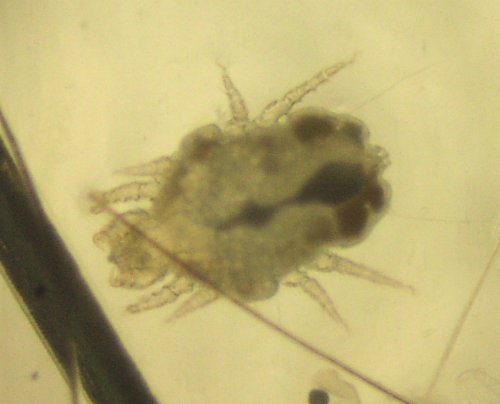Clinical Case 12 - Page 4
Jump to navigation
Jump to search
BACK
BACK TO CASES FROM GENERAL PRACTICE - SMALL ANIMAL
Courtesy of C. Antonczyk
This image is as viewed under the x10 objective.
What is this?
- This is a mite. It has long slender pairs of legs making it a surface mite. The claw-like palps typical of this genus are also evident, identifying it as a Cheyletiella sp., the cause of walking dandruff.
What is the life cycle of this parastite?
- Entire life cycle occurs on the host. Egg > larvae > nymphal stages > adult
Why is Honey's cage mate unaffected?
- Many clinically normal rabbits harbour Cheyletiella mites. With the exception of young animals, clinical cheyletiellosis is usually a sign of underlying problems. It may be due to immunosuppression or conditions that prohibit adequate grooming, such as dental disease or back pain. Obese rabbits may also have difficulty grooming.
Can this condition affect the owner?
- Yes, Cheyletiella spp. can cause a mildly pruritic dermatitis in humans.
How is the condition treated?
- Honey was treated with 3 spot on applications of ivermectin, at 10 day intervals. The other rabbit was treated also. There was no obvious underlying condition and the owner declined further investigation. In addition, combing out of the scale was advised, as this removes the mites main food source. The rabbits' hutch must also be cleaned or treated as these mites can survive for up to 10 days in the environment.
